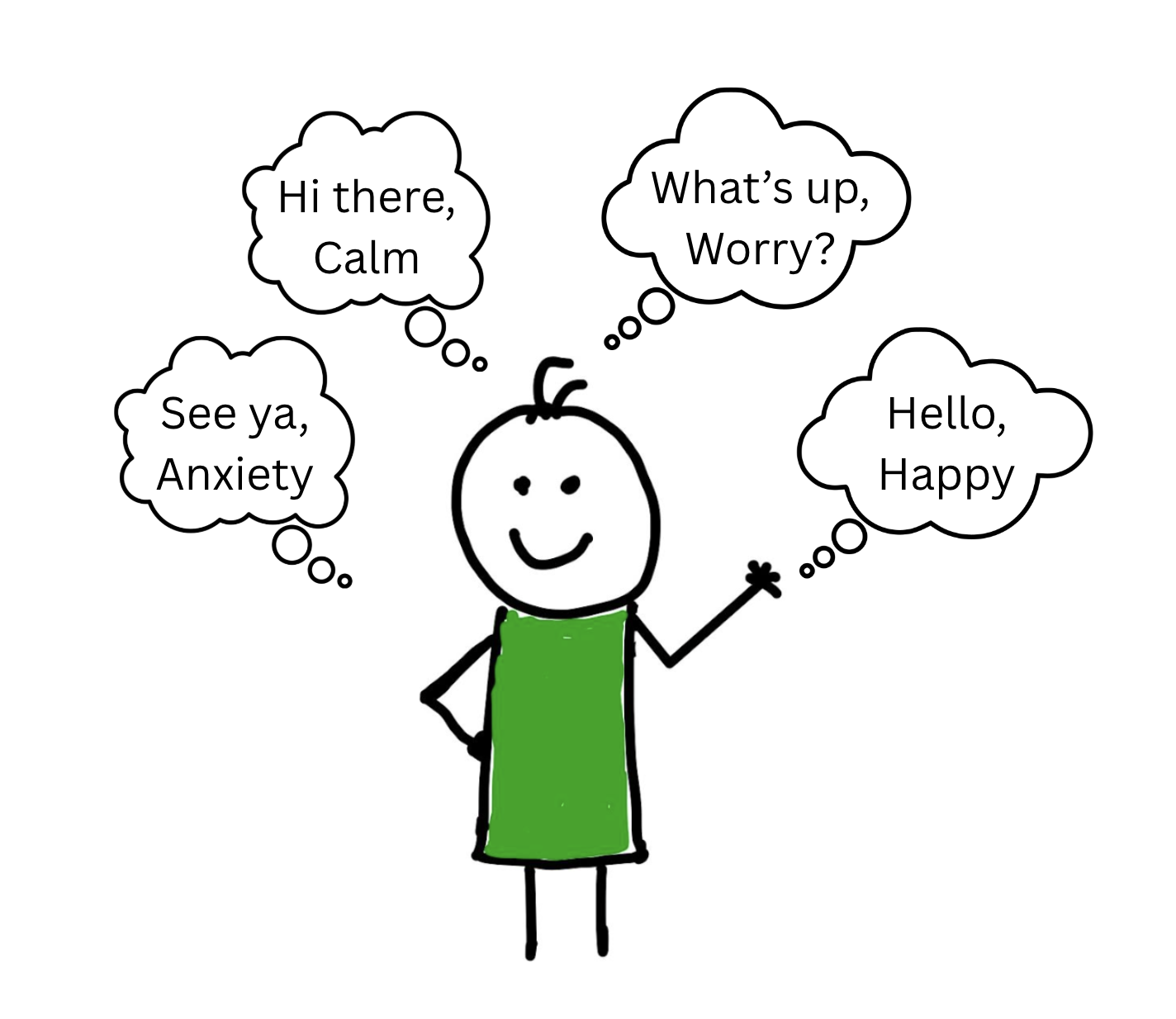How to Help Your Child Befriend Their Emotions:
A Fun Way to Teach Emotional Awareness and Control
Have you ever felt like you're stuck in a funk and just can’t shake it off? Some emotions seem to settle in and take over your whole day, refusing to leave—like an unwelcome guest who overstays their welcome.
Here’s the truth: emotions are just vibrations in your body. But most of us treat them like they’re in charge. We wear our emotions like clothes—we slip into anxiety in the morning, carry it around all day, and sometimes even forget to take it off before bed.
But what if we looked at emotions not as something we wear, but as people—visitors who want to hang out with us? Maybe even pester us. Sound a little strange? Stick with me. This mental shift can be powerful, especially for children.
Talk to Your Emotions Like People
If emotions were people, you could talk to them just like you would anyone else at a party. You can choose who to engage with—and who to ignore.
Let’s say anxiety shows up. You don’t have to pretend it’s not there. You can acknowledge it and then turn your attention elsewhere:
“Hi, Anxiety. I see you. You can stay if you want, but I’m busy focusing on something else.”
When your child practices this, it helps them stop resisting the feeling (which usually makes it stronger) and instead allows it to pass through without taking over. The key is shifting focus. Just like someone at a party might walk away if you stop paying attention to them, your emotions will often do the same.
Name Your Emotions (And Make Them Characters!)
Visuals and imagination help children process abstract ideas like emotions. So, try turning each emotion into a character with a name and personality.
Here are some examples:
Walter Worry – Always nervous, pacing the room
Happy Hillary – Bright, smiling, and fun to be around.
Angry Andy – Loud and stomping.
Excited Ellie – Bouncing and energetic.
Once your child has named their emotions, you can model how to talk to them:
“Hello, Walter Worry. I know you’re here, but I’m not interested in talking to you right now. I’m going to go hang out with Happy Hillary instead.”
If switching directly from worry to happy feels like too big of a jump, guide your child to find an emotion with a similar energy. For example, if they’re feeling fear, they might talk to Excited Ellie—since fear and excitement often feel similar in the body.
👉 Download the Meet Your Emotions worksheet.
Normalize All Emotions
It’s important to teach children that emotions aren’t “good” or “bad”—they’re all normal, and they all have a purpose.
Sometimes sadness, worry, or anger are completely appropriate. Feeling grief when someone passes away, or anxiety before a big test, is natural. What we want to help kids with is when those emotions linger without a good reason—when they start interfering with their daily lives.
Help your child understand that just because you feel a certain way doesn’t mean something is wrong with you. And just because a negative emotion shows up doesn’t mean it has to stay.
Call in the Gatekeeper
If your child’s “emotion guests” won’t leave—even after being ignored or asked to leave—it’s time to bring in the Gatekeeper (the bodyguard for their mind). The Gatekeeper can escort emotions like Walter Worry or Angry Andy out the door.
I explain the Gatekeeper technique in another blog post (A Gatekeeper for Your Mind), but know that it gives children an empowering visual: you are in control of your mind. You decide who gets to stay and who needs to leave.
By turning emotions into characters, teaching kids to talk back to them, and shifting their attention to more helpful feelings, we empower them to take control of their inner world—one conversation at a time.
Here’s a fun activity to reinforce the idea: Sit down with your child and give names and personalities to the emotions they feel most often. Then, the next time they’re overwhelmed, remind them:
“Walter Worry doesn’t get to run the show today. Let’s go find Happy Hillary and talk to her instead!”
If you have not already, please sign up to receive our monthly blog, where we will continue the discussion of teaching kids the power of their minds.
And, if you enjoyed this post and feel that a friend or family member might find it helpful or inspiring, please pass it along! Sharing is a wonderful way to spread positivity and ideas that make a difference.


